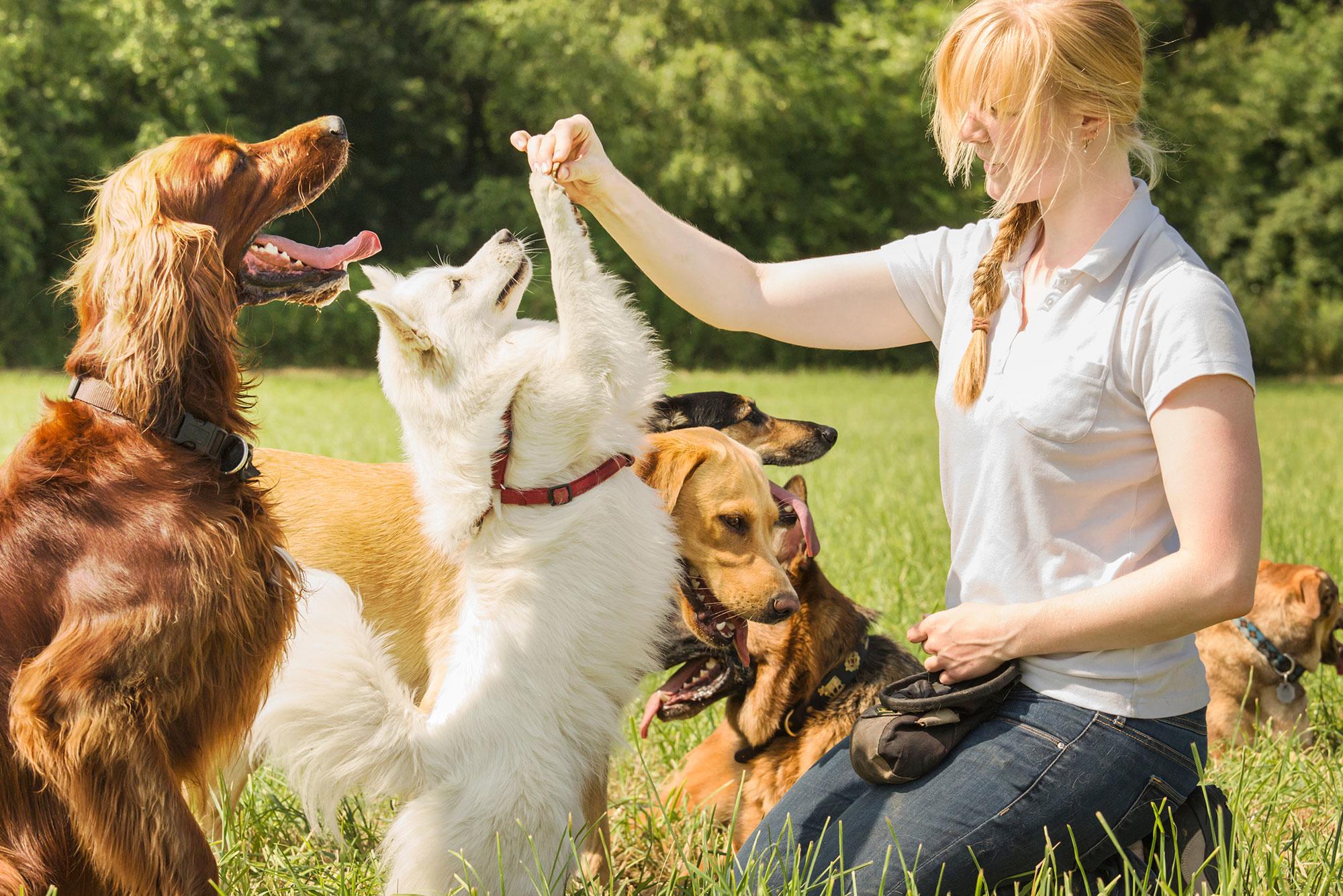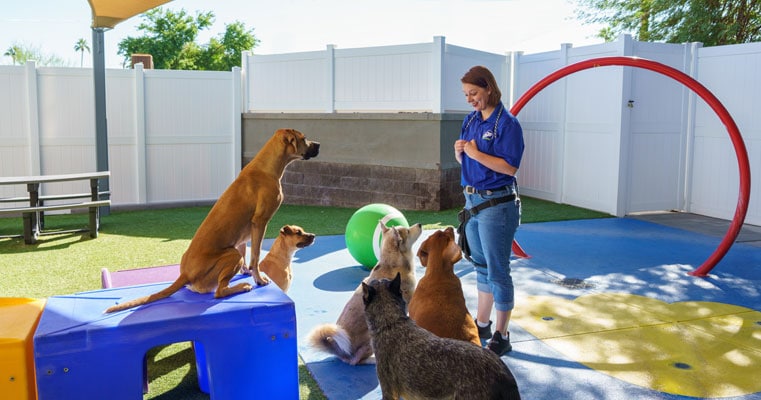Essential Tips for Successful Dog Training: A Guide for Beginners
Transform Your Dog's Actions With Proven Training Approaches
Transforming your dog's habits requires a nuanced understanding of their private traits and demands, in addition to the application of proven training techniques. By employing favorable reinforcement and recognizing crucial hints in their body language, you can successfully deal with common behavior issues such as extreme barking or jumping. Uniformity in your training approach not just enhances obedience yet also cultivates a much deeper bond of depend on and respect between you and your pet. Nevertheless, the course to effective makeover might present unforeseen difficulties that warrant further exploration.
Comprehending Dog Habits
Recognizing pet habits is essential for efficient training and communication between humans and their canine friends. Dogs, as social pets, show a variety of behaviors affected by genes, setting, and experiences - Dog training. Recognizing these behaviors helps proprietors tailor their training approaches to meet the details needs of their dogs
Key aspects of dog actions include body movement, vocalizations, and social communications. As an example, a wagging tail usually shows excitement, while a decreased head might signify entry or anxiety. Understanding these signals can aid proprietors translate their pet's mood and react properly. In addition, socialization plays a critical function fit behavior; pet dogs that engage favorably with numerous individuals and various other pets are normally much more well-adjusted and adaptable.
Additionally, identifying tension signals-- such as pacing, avoidance, or panting actions-- can stop rise right into much more severe concerns. Owners who are attuned to their dog's habits can create a nurturing and secure setting, cultivating trust fund and improving the training process. Inevitably, a deep understanding of canine actions lays the foundation for an unified connection and effective training results, making certain both pet dogs and their proprietors thrive with each other.
Positive Reinforcement Techniques
Favorable reinforcement methods are commonly recognized as one of the most effective approaches for training pet dogs, cultivating a positive learning setting. This technique includes gratifying preferred actions with treats, praise, or play, thereby urging the pet dog to duplicate those behaviors. Unlike revengeful approaches, favorable support builds trust fund and reinforces the bond in between the dog and the fitness instructor.
To implement positive reinforcement properly, timing is essential. Incentives must be given instantly following the preferred habits to assist the dog make the link. Uniformity is also important; making use of the same commands and incentives helps the pet comprehend what is anticipated. In addition, varying the incentives can maintain the canine involved - Dog training. For instance, rotating in between treats, toys, and verbal appreciation can keep interest and motivation.
It is crucial to keep in mind that positive support is not about bribery; rather, it is regarding strengthening good habits. Over time, as the dog learns to connect certain activities with positive outcomes, the frequency of rewards can be progressively lowered, transitioning to spoken appreciation or recurring incentives. This approach not just motivates obedience yet additionally advertises a certain and pleased canine, making training a more delightful experience for both celebrations included.
Dealing With Usual Issues
Addressing usual concerns during pet training is essential for ensuring a harmonious and successful partnership between the pet and its owner. Several canine owners come across behavioral obstacles, such as extreme barking, jumping, and chain pulling. Comprehending the root triggers of these behaviors is vital for reliable training.
Excessive barking may stem from dullness, anxiousness, or a lack of socialization. To alleviate this, provide ample physical exercise, mental stimulation, and chances for social interaction with both people and various other pets. Leaping can typically signify enjoyment or a wish for focus. Educating the pet to sit upon greeting can reroute this actions positively.
Leash pulling is one more common issue, frequently arising from a dog's eagerness to check out. Using proper chain handling strategies, incorporated with training methods that motivate loose-leash walking, can dramatically boost this actions.
Additionally, concerns like their explanation source safeguarding or splitting up stress and anxiety need tailored methods. Progressive desensitization and counter-conditioning can be effective in resolving these obstacles. By acknowledging and proactively handling these usual concerns, pet owners can cultivate a more delightful training experience and reinforce the bond with their canine buddies.
Consistency in Training

To achieve uniformity, it is essential that all members of the home stick to the very same training techniques. As an example, using the very same spoken signs and hand signals makes certain that the pet gets uniform messages. Additionally, the timing of corrections and rewards should correspond; instant reinforcement increases the likelihood that the pet dog will associate the actions with the end result.
Normal method sessions, coupled with structured timetables for feeding, strolling, and play, aid pets anticipate and comprehend their setting, making them a lot more receptive to training. Ultimately, uniformity fosters a sense of safety and security and trust fund, encouraging pet dogs to learn extra properly.
Building a Strong Bond
Just how can fostering a strong bond in between a canine and its owner improve the training experience? When a dog really feels safe in its connection with its owner, it is more likely to display favorable habits and be responsive to finding out.
Moreover, a strong bond facilitates far better interaction. Pet dogs are pop over to this site skilled at checking out human cues, and a relying on relationship enables clearer signals during training. Owners that spend time in structure this bond with play, socializing, and positive reinforcement develop a setting where canines really feel motivated and excited to discover.
Additionally, a reputable link can lower anxiety and behavior concerns, as canines are much less most likely to act out when they really feel recognized and looked after. Prioritizing the development of a solid bond not only improves the training experience yet also contributes to a better and more well-adjusted canine. Ultimately, the journey of training changes into a collective collaboration, bring about lasting behavior improvements.
Final Thought

Owners who are attuned to their canine's actions can develop a nurturing and secure setting, cultivating depend on and enhancing the training process. Eventually, a deep understanding of canine behavior lays the structure for an unified partnership and reliable training results, making sure both pet dogs and their owners grow together.
Addressing typical concerns throughout dog training is crucial for ensuring a unified and successful connection between the canine and its proprietor.Uniformity is a foundation of effective pet training, as it develops a clear framework for the pet to understand assumptions and habits.In final thought, changing a pet's actions through confirmed training approaches needs an understanding of canine behavior, the application of favorable reinforcement techniques, and a focus on uniformity.